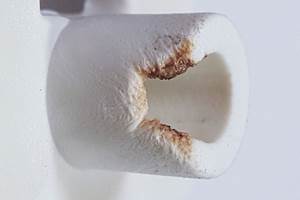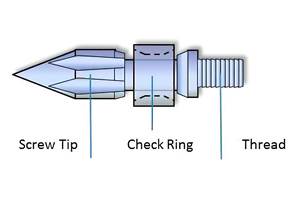Advanced Styrenic Lets Molder Shed New Light On Automotive Part
Polyoptics teamed up with Styrolution to develop a ‘breakthrough’ process for light guides.
An emerging leader in optical technology, has pioneered new technology to injection mold light guides in a single step without any refinishing operations. A high-precision tool insert with a complex laser-processing transverse uncouple structure reduces the production time of a light guide by two-thirds.
These guides are used in applications such as backlight effects in automotive interiors.
Based in Kleve, Germany, the company partnered with global styrenics supplier , Aurora, Ill. , on a “breakthrough” technology in this arena, and a new advanced styrenic material was instrumental in its success.
The key purpose of the project was to optimize—both in production time and quality—the current process for manufacturing light guides. That process consists of three successive steps that take a total of 3 minutes: production of transparent plastic plates using extrusion or calendering; cutting light-guide shapes out of the plates with a laser; and creating the complex uncouple structure with laser processing. Moreover, Polyoptic estimates that the third step typically has a 50% failure rate. The new technology has a 60 sec/unit production time and a failure rate of just 8%.
Polyoptics’ technology consists of two major innovations: Optical simulation calculations to zero in on the optimal uncouple structure pattern; and precision tool inserts made via laser processing or laser lithography. The former was used to investigate different uncouple structures. Arrangements of spherical caps, disks, and/or prisms are suitable for light guides. The structures could be either raised or embedded in the guide. The shape, density, angles, and depth of the structure depend on the guide’s geometry and the effect that is intended to be realized. With increasing distance from the light source, the height and diameter of the elements increase to achieve a homogeneous luminous density distribution.
The diamond-turning process used to produce other precision tool inserts is limited by the size of the diamond and the geometry of the “hole to be dug,” says Polyoptics. In case of the light guide, this method is not suitable because the elements are too tiny and the diamond would destroy the top edge of the hole. Reducing the size of the diamond is an option, but the smaller the diamond, the bigger the risk that it will break, Polyoptics explains.
Polyoptics’ first light guides were manufactured using PC. But in 2014, the firm tested Styrolution’s NAS styrene-methyl methacrylate-copolymer. Compared with PC, NAS showed advantages in both processing and optics. Its better flow leads to lower energy consumption and shorter cycles and makes it easier to fill out more complex, thin-walled shapes. The higher light transmission of NAS increases the luminous density, optimizing the output of the light guides without increasing the power of the light source.
Polyoptics’ engineers say their new technology is perfect for high-volume manufacturing and a perfect fit for automotive, especially for interior lighting. Polyoptics is in negotiations with automotive OEMs to apply its new light-guide technology to doorsteps and ambient lighting for controls and instruments. There is also interest from other industries like electronics.
Polyoptics offers optical engineering, ultra-precision tooling, production, and optical coating. Polyoptics molds the light guides on presses with clamping forces from 25 tons up to 500 tons. All are equipped with automation systems in a cleanroom environment.
Related Content
Back to Basics on Mold Venting (Part 1)
Here’s what you need to know to improve the quality of your parts and to protect your molds.
Read MoreUse These 7 Parameters to Unravel the Melt Temperature Mystery
Despite its integral role in a stable process and consistent parts, true melt temperature in injection molding can be an enigma. Learning more about these seven parameters may help you solve the puzzle.
Read MoreGot Streaks or Black Specs? Here’s How to Find and Fix Them
Determining the source of streaking or contamination in your molded parts is a critical step in perfecting your purging procedures ultimately saving you time and money.
Read MoreA Systematic Approach to Process Development
The path to a no-baby-sitting injection molding process is paved with data and can be found by following certain steps.
Read MoreRead Next
Making the Circular Economy a Reality
Driven by brand owner demands and new worldwide legislation, the entire supply chain is working toward the shift to circularity, with some evidence the circular economy has already begun.
Read MoreBeyond Prototypes: 8 Ways the Plastics Industry Is Using 3D Printing
Plastics processors are finding applications for 3D printing around the plant and across the supply chain. Here are 8 examples to look for at NPE2024.
Read MoreSee Recyclers Close the Loop on Trade Show Production Scrap at NPE2024
A collaboration between show organizer PLASTICS, recycler CPR and size reduction experts WEIMA and Conair recovered and recycled all production scrap at NPE2024.
Read More













